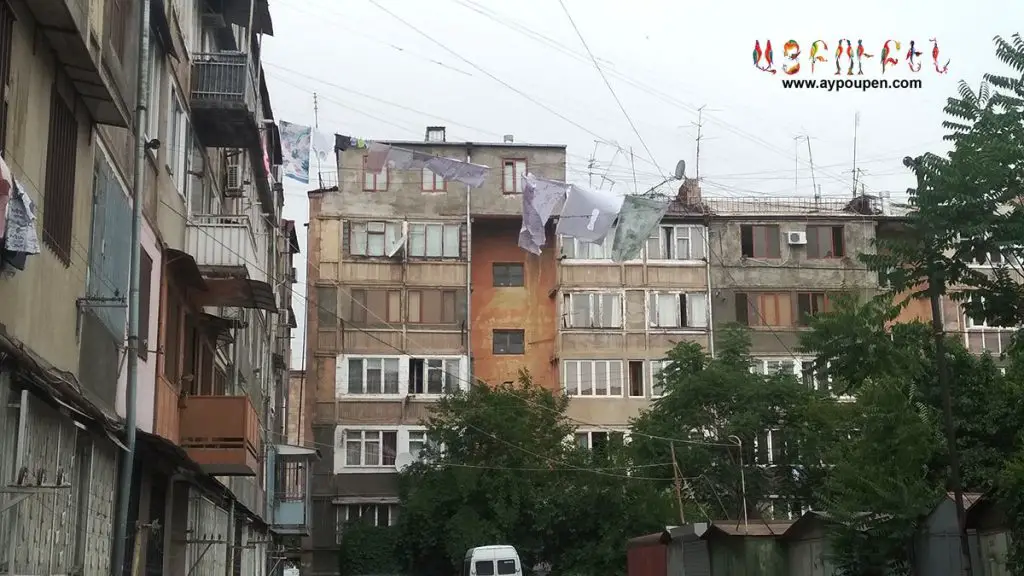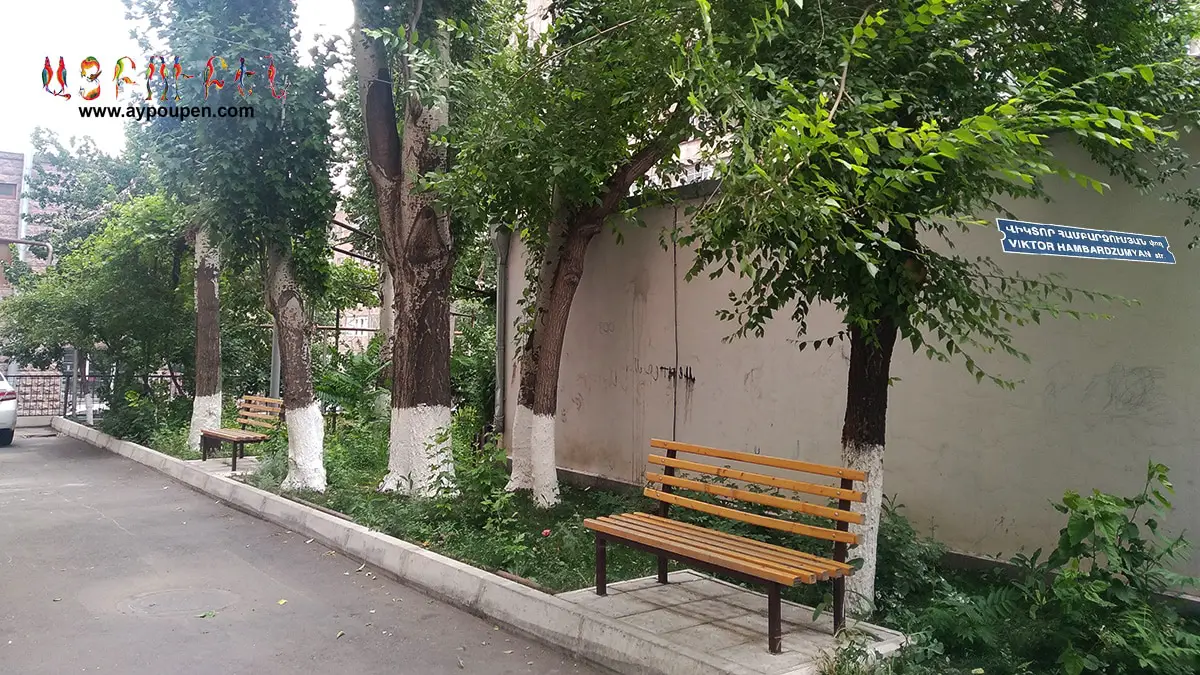People arriving in the motherland for tourism, usually choose to stay in the City Center to enjoy the obviously gorgeous luxurious Northern Avenue and 5-star destinations but unfortunately miss out on all the fun the locals enjoy.
What do locals enjoy? They know the best time of the year, the trees, their types, and how they look with the change of every season. What does nature hide? The scenery, the smell in the air, the sky, and the people. That is what ties them to their homeland strong enough to keep them from moving abroad.
Victor Hambardzumyan may look like just an ordinary street but what do locals say about it?

The Story behind the names of Streets of Yerevan
In Armenia, the majority of streets and avenues are named after people who have played enormous roles throughout the history of the country. These are authors, painters, historians, musicians, and more.
Most foreigners visiting Yerevan, the capital city, choose to be accommodated mainly in the city center, therefore they have no or very little information about the streets located further from the center.
One of these little-known streets is Viktor Hambardzumyan Street located in the Arabkir district. It has two parallel lanes, the lengths of which are 0.68 km and 0.29 km.
Hambardzumyan Street is not too far from downtown, probably a distance of only 20 minutes on foot, however, it is relatively quieter than the other streets surrounding it. Barekamutyun metro station is about 350 meters away.
The street was named after the Armenian prominent astrophysicist and science administrator Viktor Hambardzumyan (1908-1996) who is also the founder of Byurakan Astrophysical Observatory.
German prisoners of war Laid cobblestones on Gaidar Street
Before being renamed after Viktor Hambardzumyan only a few years ago, it was carrying the name of a Russian Soviet writer Arkadi Gaidar.
Foreign Armenians usually have a hard time memorizing all the different long street names in Armenia, however, they used to remember the name Gaidar quite easily, in fact, some of them keep calling it Gaidar Street ignoring the new name.
The reason is probably the fact that ‘Gaidar’ (կայտառ) in Western Armenian dialect means ‘lively, playful’ which makes it easier to be memorized.
Not many people know that a few years ago Hambardzumyan Street was covered with cobblestones, like the ones that can be seen in the small area near Cascade in the center. German prisoners of war are said to have made the cobblestone streets in Soviet Armenia during World War II.
Unfortunately, this essential piece of Armenian history, just like many others, was destroyed permanently after having been forced to give its place to regular asphalt in order to make the steep street less slippery for cars and pedestrians.
Mulberry Trees of Armenia
Anyone who has visited Yerevan at least once has probably noticed that nearly all streets and parks of Yerevan are decorated with all types of trees, among which fruit trees can also be found. Hambardzumyan Street is no exception.
Different varieties of trees are leading your way from Baghramyan Street to Papazyan Street. Among these cherry trees, mulberry trees, and oak trees stand out proudly, hand-in-hand like siblings.
Mulberry-covered parts of the street can be noticed from afar.
And with a gust of wind, it starts raining mulberries, just like in the video below.
Speaking of Mulberries
Without a doubt, any harvest tastes much more delicious when eaten right from the tree. Every year Armenians are looking forward to the start of the mulberry season. “Mulberries must be ripe now,” one may say. “Let’s go shake some mulberries!” another will add.
‘Mulberry-shaking’ is something Armenians like doing as a leisure time activity. All you need is a big piece of some clean fabric, several helping hands to hold it below the branches heavily bent from the juicy mulberries, and someone brave to climb up the tree and shake the branches.
Then the joy starts – not being able to resist the view of the big luscious mulberries pouring down the tree and making a hill right in the middle of the fabric they are holding, the helping hands forget their mission and start devouring the mouth-watering mulberries.
By the end of all the shaking, everybody is nearly as sweet as the mulberries. You can occasionally witness such episodes on Hambardzumyan Street. Taking part in it is highly recommended.
Let’s not forget that the Armenian famous mulberry vodka is an undeniable treat that even non-drinkers drink occasionally since the latter is well-known for its healing powers, but only if drunk occasionally and in small amounts.

Beyond Hambardzumyan Street
On both sides of Hambardzumyan Street, one can notice narrow passages leading through some of the buildings to the other side.
Armenia is also famous for its drinking fountains, many of them being installed in the memory of a loved one, usually a young person. Hence people’s names on them, sometimes their ages as well.
Some of these drinking fountains can be spotted on Hambardzumyan Street, however only one is still willing to welcome passers-by. Right next to it a lonely willow tree is bending, trying her best to give some shade to those quenching their thirst.
Hambardzumyan Street is one of the tiny pieces, to some extent, miraculously preserved from the old capital – the trees have not been cut down, old buildings and houses are still full of life, and women still hang their laundry outside to dry.
Men spend their free time repairing their cars or watering the trees, the elderly enjoy sitting outside and having a chat or two with their neighbors. As it is said in Armenia, a good neighbor is far better than a good relative.
And it all changes with the seasons
You can hardly see any new buildings on this street, nevertheless, there are some construction works taking place at the moment, similar to any part of Yerevan.
In the winter when there is heavy snowfall, one feels like taking a sled and sliding down Hambardzumyan Street right into Baghramyan Street. The view is outstanding especially in the moonlight when there are no cars going up and down the street and ruining Mother Nature’s creation.
The future of Viktor Hambardzumyan Street is not known, just like that of other streets. There is still some hope, however, that at least some part of it will keep on telling the stories that have been passed on from generation to generation for many years.
If you ever happen to be anywhere near Viktor Hambardzumyan Street, do not forget to stop by, quench your thirst, and shake some mulberries down!

